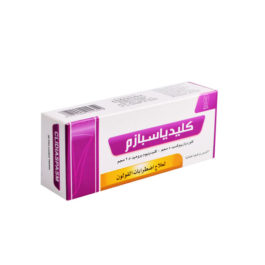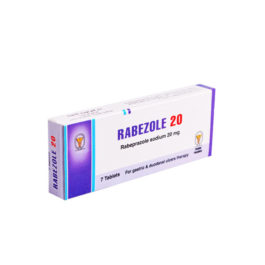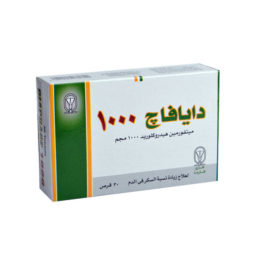Description
THERAPEUTIC INDICATIONS:
LOSAPOTT COMP is indicated for the treatment of essential hypertension in patients whose blood pressure is not adequately controlled on losartan or hydrochlorothiazide alone.
POSOLOGY AND METHOD OF ADMINISTRATION: Hypertension Losartan and hydrochlorothiazide is not for use as initial therapy, but in patients whose blood pressure is not adequately controlled by losartan potassium or hydrochlorothiazide alone. Dose titration with the individual components (losartan and hydrochlorothiazide) is recommended. When clinically appropriate, direct change from monotherapy to the fixed combination may be considered in patients whose blood pressure is not adequately controlled. The usual maintenance dose is one tablet of LOSAPOTT COMP 50 mg/12.5 mg (losartan 50 mg/HCTZ 12.5 mg) once daily. For patients who do not respond adequately to LOSAPOTT COMP 50 mg/12.5 mg, the dosage may be increased to (losartan 100 mg/ HCTZ 25 mg) once daily. The maximum dose is 100 mg/25 mg once daily. In general, the antihypertensive effect is attained within three to four weeks after initiation of therapy.
Use in patients with renal impairment and haemodialysis patients No initial dosage adjustment is necessary in patients with moderate renal impairment (i.e. creatinine clearance 30-50 ml/min). Losartan and hydrochlorothiazide tablets are not recommended for haemodialysis patients. Losartan/HCTZ tablets must not be used in patients with severe renal impairment (i.e. creatinine clearance <30 ml/min). Use in patients with intravascular volume depletion Volume and/or sodium depletion should be corrected prior to administration of losartan/HCTZ tablets. Use in patients with hepatic impairment Losartan/HCTZ is contraindicated in patients with severe hepatic impairment.
Use in the elderly Dosage adjustment is not usually necessary for the elderly.
Use in children and adolescents (< 18 years) There is no experience in children and adolescents. Therefore, losartan/hydrochlorothiazide should not be administered to children and adolescents.
Method of administration
LOSAPOTT COMP may be administered with other antihypertensive.
LOSAPOTT COMP tablets should be swallowed with a glass of water.
LOSAPOTT COMP may be administered with or without food.
CONTRAINDICATIONS:
- Hypersensitivity to losartan, sulphonamide-derived substances (as hydrochlorothiazide) or to any of the excipients.
- Therapy resistant hypokalaemia or hypercalcaemia
- Severe hepatic impairment; cholestasis and biliary obstructive disorders
- Refractory hyponatraemia
- Symtomatic hyperuricaemia/gout
- During pregnancy.
- Severe renal impairment (i.e. creatinine clearance <30 ml/min)
- Anuria
- The concomitant use of LOSAPOTT COMP with aliskiren-containing products is contraindicated in patients with diabetes mellitus or renal impairment (GFR < 60 ml/min/1.73 m2)
SPECIAL WARNINGS AND PRECAUTIONS FOR USE:
Losartan
Angiooedema
Patients with a history of angiooedema (swelling of the face, lips, throat, and/or tongue) should be closely monitored.
Hypotension and Intravascular volume depletion
Symptomatic hypotension, especially after the first dose, may occur in patients who are volume- and/or sodium-depleted by vigorous diuretic therapy, dietary salt restriction, diarrhoea or vomiting. Such conditions should be corrected before the administration of LOSAPOTT COMP tablets.
Electrolyte imbalances
Electrolyte imbalances are common in patients with renal impairment, with or without diabetes, and should be addressed. Therefore, the plasma concentrations of potassium and creatinine clearance values should be closely monitored; especially patients with heart failure and a creatinine clearance between 30-50 ml/min should be closely monitored.
The concomitant use of potassium sparing diuretics, potassium supplements and potassium containing salt substitutes with losartan /hydrochlorothiazide is not recommended.
Liver function impairment
Based on pharmacokinetic data which demonstrate significantly increased plasma concentrations of losartan in cirrhotic patients, LOSAPOTT COMP should be used with caution in patients with a history of mild to moderate hepatic impairment. There is no therapeutic experience with losartan in patients with severe hepatic impairment. Therefore LOSAPOTT COMP is contraindicated in patients with severe hepatic impairment.
Renal function impairment
As a consequence of inhibiting the renin-angiotensin-aldosterone system, changes in renal function, including renal failure, have been reported (in particular, in patients whose renal function is dependent on the renin-angiotensin-aldosterone system, such as those with severe cardiac insufficiency or pre-existing renal dysfunction).
As with other drugs that affect the renin-angiotensin-aldosterone system, increases in blood urea and serum creatinine have also been reported in patients with bilateral renal artery stenosis or stenosis of the artery to a solitary kidney; these changes in renal function may be reversible upon discontinuation of therapy. losartan should be used with caution in patients with bilateral renal artery stenosis or stenosis of the artery to a solitary kidney.
Renal transplantation
There is no experience in patients with recent kidney transplantation.
Primary hyperaldosteronism
Patients with primary aldosteronism generally will not respond to antihypertensive drugs acting through inhibition of the renin-angiotensin system. Therefore, the use of LOSAPOTT COMP tablets is not recommended.
Coronary heart disease and cerebrovascular disease:
As with any antihypertensive agents, excessive blood pressure decrease in patients with ischaemic cardiovascular and cerebrovascular disease could result in a myocardial infarction or stroke.
Heart failure:
In patients with heart failure, with or without renal impairment, there is – as with other drugs acting on the renin-angiotensin system – a risk of severe arterial hypotension, and (often acute) renal impairment.
Aortic and mitral valve stenosis, obstructive hypertrophic cardiomyophathy
As with other vasodilators, special caution is indicated in patients suffering from aortic or mitral stenosis, or obstructive hypertrophic cardiomyopathy.
Ethnic differences
As observed for angiotensin converting enzyme inhibitors, losartan and the other angiotensin antagonists are apparently less effective in lowering blood pressure in black people than in non-blacks, possibly because of higher prevalence of low-renin states in the black hypertensive population.
Pregnancy
AIIRAs should not be initiated during pregnancy. Unless continued AIIAR therapy is considered essential, patients planning pregnancy should be changed to alternative anti-hypertensive treatments which have an established safety profile for use in pregnancy. When pregnancy is diagnosed, treatment with AIIRAs should be stopped immediately, and, if appropriate, alternative therapy should be started.
Dual blockade of the renin-angiotensin-aldosterone system (RAAS) There is evidence that the concomitant use of ACE-inhibitors, angiotensin II receptor blockers or aliskiren increases the risk of hypotension, hyperkalaemia, and decreased renal function (including acute renal failure). Dual blockade of RAAS through the combined use of ACE-inhibitors, angiotensin II receptor blockers or aliskiren is therefore not recommended. If dual blockade therapy is considered absolutely necessary, this should only occur under specialist supervision and subject to frequent close monitoring of renal function, electrolytes and blood pressure. ACE-inhibitors and angiotensin II receptor blockers should not be used concomitantly in patients with diabetic nephropathy.
Hydrochlorothiazide
Hypotension and electrolyte/fluid imbalance
As with all antihypertensive therapy, symptomatic hypotension may occur in some patients. Patients should be observed for clinical signs of fluid or electrolyte imbalance, e.g., volume depletion, hyponatremia, hypochloremic alkalosis, hypomagnesemia or hypokalemia which may occur during intercurrent diarrhea or vomiting. Periodic determination of serum electrolytes should be performed at appropriate intervals in such patients. Dilutional hyponatraemia may occur in oedematous patients in hot weather.
Metabolic and endocrine effects
Thiazide therapy may impair glucose tolerance. Dosage adjustment of antidiabetic agents, including insulin, may be required. Latent diabetes mellitus may become manifest during thiazide therapy.
Thiazides may decrease urinary calcium excretion and may cause intermittent and slight elevation of serum calcium. Marked hypercalcemia may be evidence of hidden hyperparathyroidism. Thiazides should be discontinued before carrying out tests for parathyroid function.
Increases in cholesterol and triglyceride levels may be associated with thiazide diuretic therapy.
Thiazide therapy may precipitate hyperuricemia and/or gout in certain patients. Because losartan decreases uric acid, losartan in combination with hydrochlorothiazide attenuates the diuretic-induced hyperuricemia.
Hepatic impairment
Thiazides should be used with caution in patients with impaired hepatic function or progressive liver disease, as it may cause intrahepatic cholestasis, and since minor alterations of fluid and electrolyte balance may precipitate hepatic coma.
LOSAPOTT COMP is contraindicated for patients with severe hepatic impairment.
Other
In patients receiving thiazides, hypersensitivity reactions may occur with or without a history of allergy or bronchial asthma. Exacerbation or activation of systemic lupus erythematosus has been reported with the use of thiazides.
Excipient
This medicinal product contains lactose. Patients with rare hereditary problems of galactose intolerance, the Lapp lactase deficiency or glucose-galactose malabsorption should not take this medicine.
INTERACTION WITH OTHER MEDICAMENTS AND OTHER FORMS OF INTERACTION:
Losartan
Rifampicin and fluconazole have been reported to reduce levels of active metabolite. The clinical consequences of these interactions have not been evaluated.
As with other drugs that block angiotensin II or its effects, concomitant use of potassium-sparing diuretics (e.g. spironolactone, triamterene, amiloride), potassium supplements, or salt substitutes containing potassium may lead to increases in serum potassium. Co-medication is not advisable.
As with other medicines which affect the excretion of sodium, lithium excretion may be reduced. Therefore, serum lithium levels should be monitored carefully if lithium salts are to be co-administered with angiotensin II receptor antagonists.
When angiotensin II antagonists are administered simultaneously with NSAIDs (i.e. selective COX-2 inhibitors, acetylsalicylic acid at anti-inflammatory doses and non-selective NSAIDs), attenuation of the antihypertensive effect may occur. Concomitant use of angiotensin II antagonists or diuretics and NSAIDs may lead to an increased risk of worsening of renal function, including possible acute renal failure, and an increase in serum potassium, especially in patients with poor pre-existing renal function. The combination should be administered with caution, especially in the elderly. Patients should be adequately hydrated and consideration should be given to monitoring renal function after initiation of concomitant therapy, and periodically thereafter.
In some patients with compromised renal function who are being treated with non-steroidal anti-inflammatory drugs, including selective cyclooxygenase-2 inhibitors, the co-administration of angiotensin II receptor antagonists may result in a further deterioration of renal function. These effects are usually reversible.
Clinical trial data have shown dual blockade of the renin-angiotensin-aldosterone system (RAAS) through the combined use of ACE-inhibitors, angiotensin II receptor blockers or aliskiren is associated with a higher frequency of adverse events such as hypotension, hyperkalaemia, and decreased renal function (including acute renal failure) compared to the use of a single RAAS-acting agent.
Other substances inducing hypotension like tricyclic antidepressants, antipsychotics, baclofene, amifostine: Concomitant use with these drugs that lower blood pressure, as main or side-effect, may increase the risk of hypotension.
Hydrochlorothiazide
When given concurrently, the following drugs may interact with thiazide diuretics:
Alcohol, Barbiturates, or Narcotics
Potentiation of orthostatic hypotension may occur.
Antidiabetic Drugs (Oral Agents and Insulin)
The treatment with a thiazide may influence the glucose tolerance. Dosage adjustment of the antidiabetic drug may be required. Metformin should be used with caution because of the risk of lactic acidosis induced by possible functional renal failure linked to hydrochlorothiazide. Other Antihypertensive Drugs
Additive effect.
Cholestyramine and Colestipol Resins
Absorption of hydrochlorothiazide is impaired in the presence of anionic exchange resins. Single doses of either cholostyramine or colestipol resins bind the hydrochlorothiazide and reduce its absorption from the gastrointestinal tract by up to 85 and 43 percent, respectively.
Corticosteroids, ACTH
Intensified electrolyte depletion, particularly hypokalemia may occur.
Pressor Amines (e.g., Epinephrine)
Possible decreased response to pressor amines but not sufficient to preclude their use.
Skeletal Muscle Relaxants, nondepolarizing (e.g. tubocurarine)
Possible increased responsiveness to the muscle relaxant.
Lithium
Diuretic agents reduce the renal clearance of lithium and add a high risk of lithium toxicity; concomitant use is not recommended.
Medicinal products used in the treatment of gout (probenecid, sulfinpyrazone and allopurinol)
Dosage adjustment of uricosuric medicinal products may be necessary since hydrochlorothiazide may raise the level of serum uric acid. Increase in dosage of probenecid or sulfinpyrazone may be necessary. Coadministration of a thiazide may increase the incidence of hypersensitivity reactions to allopurinol.
Anticholinergic agents (e.g. atropine, biperiden)
Increase of the bioavailability to thiazide-type diuretics by decreasing gastrointestinal motility and stomach emptying rate.
Cytotoxic agents (e.g. cyclophosphamide, methotrexate)
Thiazides may reduce the renal excretion of cytotoxic medicinal products and potentiate their myelosuppressive effects.
Salicylates
In case of high dosages of salicylates hydrochlorothiazide may enhance the toxic effect of the salicylates on the central nervous system.
Methyldopa
There have been isolated reports of haemolytic anaemia occurring with concomitant use of hydrochlorothiazide and methyldopa.
Cyclosporin
Concomitant treatment with cyclosporin may increase the risk of hyperuricaemia and gout-type complications.
Digitalis glycosides
Thiazide-induced hypokalaemia or hypomagnesaemia may favour the onset of digitalis-induced cardiac arrhythmias.
Medicinal products affected by serum potassium disturbances
Periodic monitoring of serum potassium and ECG is recommended when losartan/hydrochlorothiazide is administered with medicinal products affected by serum potassium disturbances (e.g. digitalis glycosides and antiarrhythmics) and with the following torsades de pointes (ventricular tachycardia)-inducing medicinal products (including some antiarrhythmics), hypokalaemia being a predisposing factor to torsades de pointes (ventricular tachycardia):
- Class Ia antiarrythmics (e.g. quinidine, hydroquinidine, disopyramide).
- Class III antiarrythmics (e.g. amiodarone, sotalol, dofetilide, ibutilide).
- Some antipsychotics (e.g. thioridazine, chlorpromazine, levomepromazine, trifluoperazine, cyamemazine, sulpiride, sultopride, amisulpride, tiapride, pimozide, haloperidol, droperidol).
- Others (e.g. bepridil, cisapride, diphemanil, erythromycin IV, halofantrin, mizolastin, pentamidine, terfenadine, vincamine IV).
Calcium salts
Thiazide diuretics may increase serum calcium levels due to decreased excretion. If calcium supplements must be prescribed, serum calcium levels should be monitored and calcium dosage should be adjusted accordingly.
Laboratory Test Interactions
Because of their effects on calcium metabolism, thiazides may interfere with tests for parathyroid function.
Carbamazepine
Risk of symptomatic hyponatremia. Clinical and biological monitoring is required.
Iodine Contrast Media
In case of diuretic-induced dehydration, there is an increased risk of acute renal failure, especially with high doses of the iodine product. Patients should be rehydrated before the administration.
Amphotericin B (parenteral), corticosteroids, ACTH, stimulant laxatives, or glycyrrhizin (found in liquorice).
Hydrochlorothiazide may intensify electrolyte imbalance, particularly hypokalaemia.
Fertility, PREGNANCY AND LACTATION:
Pregnancy
Angiotensin II Receptor Antagonists (AIIRAs):
The use of AIIRAs is not recommended during the first trimester of pregnancy.
The use of AIIRAs is contraindicated during the 2nd and 3rd trimesters of pregnancy.
Epidemiological evidence regarding the risk of teratogenicity following exposure to ACE inhibitors during the first trimester of pregnancy has not been conclusive; however a small increase in risk cannot be excluded. Whilst there is no controlled epidemiological data on the risk with Angiotensin II Receptor Inhibitors (AIIRAs), similar risks may exist for this class of drugs. Unless continued AIIRA therapy is considered essential, patients planning pregnancy should be changed to alternative anti-hypertensive treatments which have an established safety profile for use in pregnancy. When pregnancy is diagnosed, treatment with AIIRAs should be stopped immediately and, if appropriate, alternative therapy should be started.
Exposure to AIIRA therapy during the second and third trimesters is known to induce human fetotoxicity (decreased renal function, oligohydramnios, skull ossification retardation) and neonatal toxicity (renal failure, hypotension, hyperkalaemia).
Should exposure to AIIRAs have occurred from the second trimester of pregnancy, ultrasound check of renal function and skull is recommended.
Infants whose mothers have taken AIIRAs should be closely observed for hypotension.
Hydrochlorothiazide:
There is limited experience with hydrochlorothiazide during pregnancy, especially during the first trimester.
Hydrochlorothiazide crosses the placenta. Based on the pharmacological mechanism of action of hydrochlorothiazide, its use during second and third trimesters may compromise foeto-placental perfusion and may cause foetal and neonatal effects like icterus, disturbance of electrolyte balance and thrombocytopenia.
Hydrochlorothiazide should not be used for gestational oedema, gestational hypertension or preeclampsia due to the risk of decreased plasma volume and placental hypoperfusion, without a beneficial effect on the course of the disease.
Hydrochlorothiazide should not be used for essential hypertension in pregnant women except in rare situations where no other treatment could be used.
Lactation
Angiotensin II Receptor Antagonists (AIIRAs):
LOSAPOTT COMP is not recommended and alternative treatments with better established safety profiles during breastfeeding are preferable, especially while nursing a newborn or preterm infant.
Hydrochlorothiazide:
Hydrochlorothiazide is excreted in human milk in small amounts. Thiazides in high doses causing intense diuresis can inhibit the milk production. The use of LOSAPOTT COMP during breastfeeding is not recommended. If LOSAPOTT COMP is used during breastfeeding, doses should be kept as low as possible.
Effects on ability to drive and use machines
No studies on the reactions on the ability to drive and use machines have been performed. However, when driving vehicles or operating machinery it must be borne in mind that dizziness or drowsiness may occasionally occur when taking antihypertensive therapy, in particular during initiation of treatment or when the dose is increased.
UNDESIRABLE EFFECTS:
The adverse reactions below are classified where appropriate by system organ class and frequency according to the following convention:
| System organ class | Adverse reaction | Frequency |
| Hepato-biliary disorders | Hepatitis | rare |
| Investigations | Hyperkalaemia, elevation of ALT | rare |
The adverse reactions that have been seen with one of the individual components and may be potential adverse reactions with losartan potassium/hydrocholorthiazide are the following:
Losartan:
| System organ class | Adverse reaction | Frequency |
| Blood and lymphatic system disorders | anaemia, Henoch-Schönlein purpura, ecchymosis, haemolysis | uncommon |
| thrombocytopenia | not known | |
| Cardiac disorders | hypotension, orthostatic hypotension, sternalgia, angina pectoris, grade II-AV block, cerebrovascular event, myocardial infarction, palpitation, arrhythmias (atrial fibrillations, sinus bradycardia, tachycardia, ventricular tachycardia, ventricular fibrillation) | uncommon |
| Ear and labyrinth disorders | vertigo, tinnitus | uncommon |
| Eye disorders | blurred vision, burning/stinging in the eye, conjunctivitis, decrease in visual acuity | uncommon |
| Gastrointestinal disorders | abdominal pain, nausea, diarrhea, dyspepsia | common |
| constipation, dental pain, dry mouth, flatulence, gastritis, vomiting, obstipation | uncommon | |
| pancreatitis | not known | |
| General disorders and administration site conditions | asthenia, fatigue, chest pain | common |
| facial oedema, oedema, fever | uncommon | |
| flu-like symptoms, malaise | not known | |
| Hepatobiliary disorders | liver function abnormalities | not known |
| Immune system disorders | hypersensitivity: anaphylactic reactions, angiooedema including swelling of the larynx and glottis causing airway obstruction and/or swelling of the face, lips, pharynx, and/or tongue; in some of these patients angiooedema had been reported in the past in connection with the administration of other medicines, including ACE inhibitors; | rare |
| Metabolism and nutrition disorders | anorexia, gout | uncommon |
| Musculoskeletal and connective tissue disorders | muscle cramp, back pain, leg pain, myalgia | common |
| arm pain, joint swelling, knee pain, musculoskeletal pain, shoulder pain, stiffness, arthralgia, arthritis, coxalgia, fibromyalgia, muscle weakness | uncommon | |
| rhabdomyolysis | not known | |
| Nervous system disorders | headache, dizziness | common |
| nervousness, paraesthesia, peripheral neuropathy, tremor, migraine, syncope | uncommon | |
| dysgeusia | not known | |
| Psychiatric disorders | insomnia | common |
| anxiety, anxiety disorder, panic disorder, confusion, depression, abnormal dreams, sleep disorder, somnolence, memory impairment | uncommon | |
| Renal and urinary disorders | renal impairment, renal failure | common |
| nocturia, urinary frequency, urinary tract infection | uncommon | |
| Reproductive system and breast disorders | decreased libido, erectile dysfunction/impotence | uncommon |
| Respiratory, thoracic and mediastinal disorders | cough, upper respiratory infection, nasal congestion, sinusitis, sinus disorder | common |
| pharyngeal discomfort, pharyngitis, laryngitis, dyspnoea, bronchitis, epistaxis, rhinitis, respiratory congestion | uncommon | |
| Skin and subcutaneous tissue disorders | alopecia, dermatitis, dry skin, erythema, flushing, photosensitivity, pruritus, rash, urticaria, sweating | uncommon |
| Vascular disorders | vasculitis | uncommon |
| dose-related orthostatic effects | not known | |
| Investigations | hyperkalaemia, mild reduction of haematocrit and haemoglobin, hypoglycaemia | common |
| mild increase in urea and creatinine serum levels | uncommon | |
| increase in hepatic enzymes and bilirubin | very rare | |
| hyponatraemia | non known |
Hydrochlorothiazide
| System organ class | Adverse reaction | Frequency |
| Blood and lymphatic system disorders | Agranulocytosis, aplastic anaemia, haemolytic anaemia, leukopenia, purpura, thrombocytopenia | uncommon |
| Immune system disorders | Anaphylactic reaction | rare |
| Metabolism and nutrition disorders | Anorexia, hyperglycaemia, hyperuricaemia, hypokalaemia, hyponatraemia | uncommon |
| Psychiatric disorders | Insomnia | uncommon |
| Nervous system disorders | Cephalalgia | common |
| Eye disorders | Transient blurred vision, xanthopsia | uncommon |
| Vascular disorders | Necrotizing angiitis (vasculitis, cutaneous vasculitis) | uncommon |
| Respiratory, thoracic and mediastinal disorders | Respiratory distress including pneumonitis and pulmonary oedema | uncommon |
| Gastrointestinal disorders | Sialoadenitis, spasms, stomach irritation, nausea, vomiting, diarrhoea, constipation | uncommon |
| Hepato-biliary disorders | Icterus (intrahepatic cholestatis), pancreatitis | uncommon |
| Skin and subcutaneous tissue disorders | Photosensitivity, urticaria, toxic epidermal necrolysis | uncommon |
| cutaneous lupus erythematosus | not known | |
| Musculoskeletal and connective tissue disorders | Muscle cramps | uncommon |
| Renal and urinary disorders | Glycosuria, interstitial nephritis, renal dysfunction, renal failure | uncommon |
| General disorders and administration site conditions | Fever, dizziness | uncommon |
OVERDOSE:
No specific information is available on the treatment of overdosage with LOSAPOTT COMP. Treatment is symptomatic and supportive therapy with LOSAPOTT COMP should be discontinued and the patient observed closely. Suggested measures include induction of emesis and/or gastric lavage if ingestion is recent, and correction of: dehydration, electrolyte imbalance and hypotension by established procedures.
Losartan
Limited data are available in regard to overdosage in humans. The most likely manifestation of’ overdosage would be hypotension and tachycardia; bradycardia could occur from parasympathetic (vagal) stimulation. Neither losartan nor the active metabolite can be removed by hemodialysis.
Hydrochlorothiazide
The most common signs and symptoms observed are those caused by electrolyte depletion (hypokalemia, hypochloremia, hyponatremia) and dehydration resulting from excessive diuresis. If digitalis has also been administered, hypokalemia may accentuate cardiac arrhythmias. The degree to which hydrochlorothiazide is removed by hemodialysis has not been established.
PHARMACOLOGICAL PROPERTIES
Pharmacodynamic Properties
Pharmacotherapeutic group: Angiotensin II antagonists and diuretics, ATC code: C09DA01
Losartan-hydrochlorothiazide
The components of LOSAPOTT COMP have been shown to have an additive effect on blood pressure reduction, reducing blood p ressure to a greater degree than either component alone. This effect is thought to be a result of the complimentary actions of both components. Further, as a result of its diuretic effect, hydrochlorothiazide increases plasma renin activity, increases aldosterone secretion, decreases serum potassium, and increases the levels of angiotensin II. Administration of losartan blocks all the physiologically relevant actions of angiotensin II and through inhibition of aldosterone could tend to attenuate the potassium loss associated with the diuretic.
Losartan has been shown to have a mild and transient uricosuric effect. Hydrochlorothiazide has been shown to cause modest increases in uric acid; the combination of losartan and hydrochlorothiazide tends to attenuate the diuretic-induced hyperuricemia.
The antihypertensive effect of LOSAPOTT COMP is sustained for a 24-hour period. In clinical studies of at least one year’s duration, the antihypertensive effect was maintained with continued therapy. Despite the significant decrease in blood pressure, administration of LOSAPOTT COMP had no clinically significant effect on heart rate. In clinical trials, after 12 weeks of therapy with losartan 50 mg/hydrochlorothiazide 12.5 mg, trough sitting diastolic blood pressure was reduced by an average of up to 13.2 mmHg.
LOSAPOTT COMP is effective in reducing blood pressure in males and females, blacks and non-blacks and in younger (<65 years) and older (≥65 years) patients and is effective in all degrees of hypertension.
Losartan
Losartan is a synthetically produced oral angiotensin-II receptor (type AT1) antagonist. Angiotensin II, a potent vasoconstrictor, is the primary active hormone of the renin-angiotensin system and an important determinant of the pathophysiology of hypertension. Angiotensin II binds to the AT1 receptor found in many tissues (e.g. vascular smooth muscle, adrenal gland, kidneys and the heart) and elicits several important biological actions, including vasoconstriction and the release of aldosterone. Angiotensin II also stimulates smooth-muscle cell proliferation.
Losartan selectively blocks the AT1 receptor.
Losartan does not have an agonist effect nor does it block other hormone receptors or ion channels important in cardiovascular regulation. Furthermore, losartan does not inhibit ACE (kininase II), the enzyme that degrades bradykinin. Consequently, there is thus no increase in bradykinin-mediated undesirable effects.
During the administration of losartan the removal of the angiotensin II negative feedback on renin secretion leads to increased plasma-renin activity (PRA). Increase in the PRA leads to an increase in angiotensin II in plasma. Despite these increases, antihypertensive activity and suppression of the plasma aldosterone concentration are maintained, indicating effective angiotensin II receptor blockade. After the discontinuation of losartan, PRA and angiotensin II values fell within 3 days to the baseline values.
Both losartan and its principal active metabolite have a far greater affinity for the AT1 receptor than for the AT2 receptor. The active metabolite is 10- to 40-times more active than losartan on a weight for weight basis.
In nondiabetic hypertensive patients with proteinuria, the administration of losartan potassium significantly reduces proteinuria, fractional excretion of albumin and IgG. Losartan maintains glomerular filtration rate and reduces filtration fraction. Generally losartan causes a decrease in serum uric acid (usually <0.4 mg/dL) which was persistent in chronic therapy.
Losartan has no effect on autonomic reflexes and no sustained effect on plasma norepinephrine.
In patients with left ventricular failure, 25 mg and 50 mg doses of losartan produced positive hemodynamic and neurohormonal effects characterized by an increase in cardiac index and decreases in pulmonary capillary wedge pressure, systemic vascular resistance, mean systemic arterial pressure and heart rate and a reduction in circulating levels of aldosterone and norepinephrine, respectively. The occurrence of hypotension was dose related in these heart failure patients.
Hydrochlorothiazide
Hydrochlorothiazide is a thiazide diuretic. The mechanism of the antihypertensive effect of thiazide diuretics is not fully known. Thiazides affect the renal tubular mechanisms of electrolyte reabsorption, directly increasing excretion of sodium and chloride in approximately equivalent amounts. The diuretic action of hydrochlorothiazide reduces plasma volume, increases plasma renin activity and increases aldosterone secretion, with consequent increases in urinary potassium and bicarbonate loss, and decreases in serum potassium. The renin-aldosterone link is mediated by angiotensin II and therefore co-administration of an angiotensin II receptor antagonist tends to reverse the potassium loss associated with thiazide diuretics.
After oral use, diuresis begins within 2 hours, peaks in about 4 hours and lasts about 6 to 12 hours the antihypertensive effect persists for up to 24 hours.
Pharmacokinetic Properties
Absorption
Losartan
Following oral administration, losartan is well absorbed and undergoes first-pass metabolism, forming an active carboxylic acid metabolite and other inactive metabolites. The systemic bioavailability of losartan tablets is approximately 33%. Mean peak concentrations of losartan and its active metabolite are reached in 1 hour and in 3-4 hours, respectively. There was no clinically significant effect on the plasma concentration profile of losartan when the drug was administered with a standardized meal.
Distribution
Losartan
Both losartan and its active metabolite are ≥99% bound to plasma proteins, primarily albumin. The volume of distribution of losartan is 34 liters. Studies in rats indicate that losartan crosses the blood-brain barrier poorly, if at all.
Hydrochlorothiazide
Hydrochlorothiazide crosses the placental but not the blood-brain barrier and is excreted in breast milk.
Biotransformation
Losartan
About 14% of an intravenously- or orally-administered dose of losartan is converted to its active metabolite. Following oral and intravenous administration of 14C-labelled losartan potassium, circulating plasma radioactivity primarily is attributed to losartan and its active metabolite. Minimal conversion of losartan to its active metabolite was seen in about one percent of individuals studied.
In addition to the active metabolite, inactive metabolites are formed, including two major metabolites formed by hydroxylation of the butyl side chain and a minor metabolite, an N-2 tetrazole glucuronide.
Elimination
Losartan
Plasma clearance of losartan and its active metabolite is about 600 ml/min and 50 ml/min, respectively. Renal clearance of losartan and its active metabolite is about 74 ml/min and 26 ml/min, respectively. When losartan is administered orally, about 4% of the dose is excreted unchanged in the urine, and about 6% of the dose is excreted in the urine as active metabolite. The pharmacokinetics of losartan and its active metabolite are linear with oral losartan potassium doses up to 200 mg.
Following oral administration, plasma concentrations of losartan and its active metabolite decline polyexponentially with a terminal half-life of about 2 hours and 6-9 hours, respectively. During once-daily dosing with 100 mg, neither losartan nor its active metabolite accumulates significantly in plasma.
Both biliary and urinary excretion contribute to the elimination of losartan and its metabolites. Following an oral dose of 14C-labelled losartan in man, about 35% of radioactivity is recovered in the urine and 58% in the faeces.
Hydrochlorothiazide
Hydrochlorothiazide is not metabolized but is eliminated rapidly by the kidney. When plasma levels have been followed for at least 24 hours, the plasma half-life has been observed to vary between 5.6 and 14.8 hours. At least 61 percent of the oral dose is eliminated unchanged within 24 hours.
Characteristics in Patients
Losartan-Hydrochlorothiazide
The plasma concentrations of losartan and its active metabolite and the absorption of hydrochlorothiazide in elderly hypertensives are not significantly different from those in young hypertensives.
Losartan
Following oral administration in patients with mild to moderate alcoholic cirrhosis of the liver, plasma concentrations of losartan and its active metabolite were, respectively, 5-fold and 1.7-fold greater than those seen in young male volunteers.
Pharmacokinetic studies showed that the AUC of losartan in Japanese and non-Japanese healthy male subjects is not different. However, the AUC of the carboxylic acid metabolite (E-3174) appears to be different between the two groups, with an approximately 1.5 fold higher exposure in Japanese subjects than in non-Japanese subjects. The clinical significance of these results is not known.
Neither losartan nor the active metabolite can be removed by hemodialysis.
STORAGE
Keep at a temperature not exceeding 30°C in dry place.
Keep out of reach of children.
PACKAGE
A carton box containing 14 tablets in 2 PVC/Al strips with a pamphlet.








Reviews
There are no reviews yet.